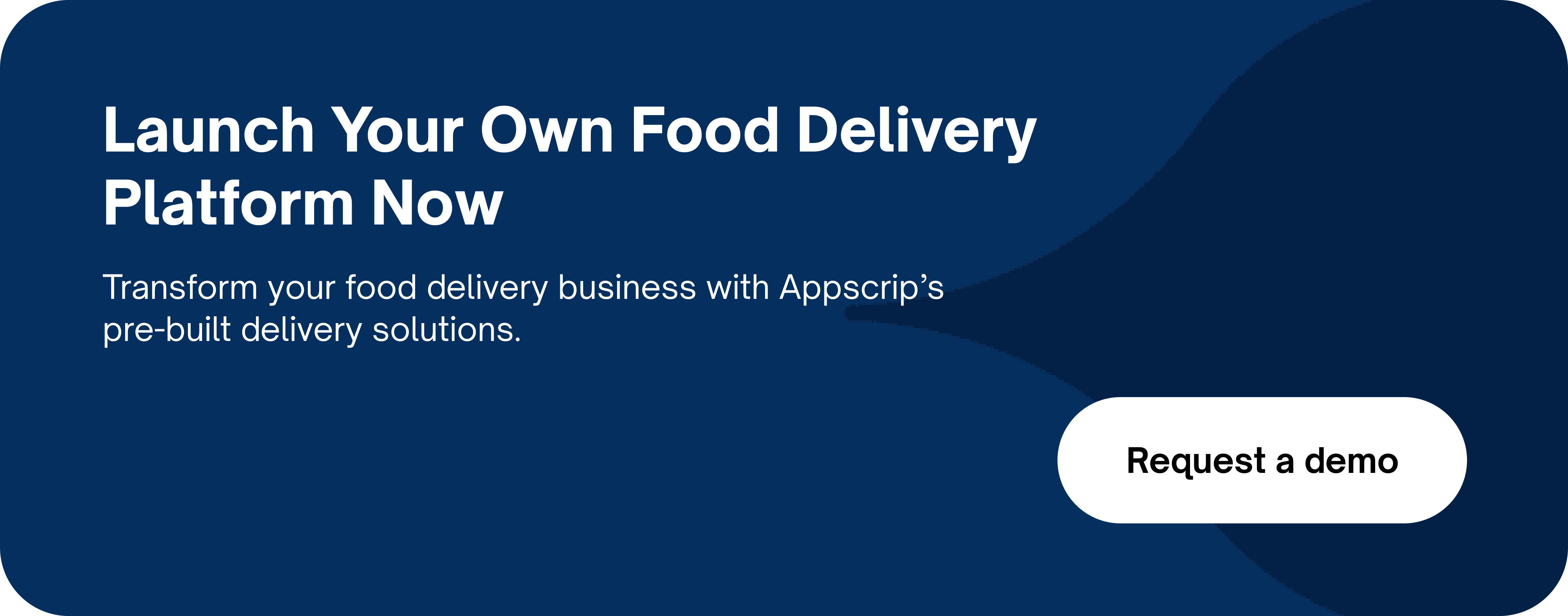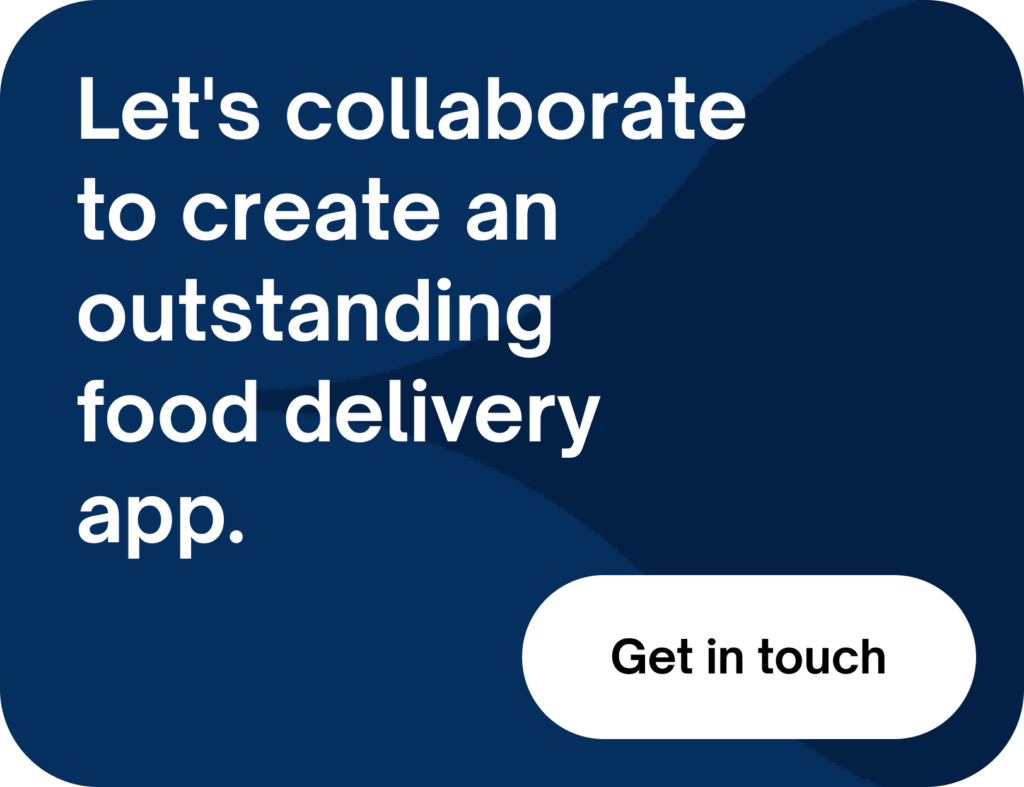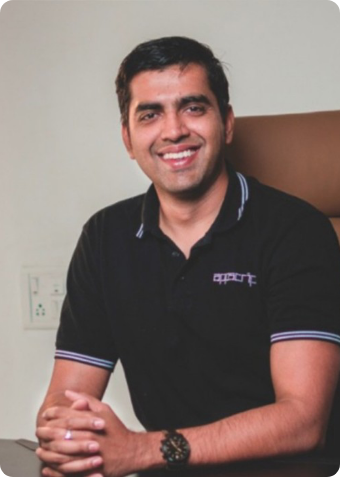A growing urban population, rising disposable incomes, and changing food preferences have contributed to the rise in demand for food delivery services. Prevalent use of smartphones contributed to the widespread adoption of food delivery apps that has now become crucial to the food industry.
The cost to develop a food delivery app can vary significantly based on its complexity and the features to be included. The food delivery app market presents a huge potential for entrepreneurs. Hence the cost to develop a food delivery app needs to be visited.
Cost To Develop A Food Delivery App
| Type Of App | Timeline To Develop | Cost To Develop |
| Simple Food Delivery App | 5 to 7 months | $30,000 to $60,000 |
| Complex Food Delivery App | 7 to 11 months | $60,000 to $120,000 |
| Highly Complex Food Delivery App | 12 to 18 months | $120,000 to $ 400,000 |
Key Features And Functionalities
To develop a successful food delivery app, certain key features and functionalities are essential. As in:
Simple Food Delivery App:
Features:
- User registration and login
- Browse nearby restaurants and menus
- Add items to the cart
- Checkout and payment integration
- Order tracking
- Push notifications
- Customer support (in-app messaging)
Complex Food Delivery App:
Features (in addition to the simple app):
- User profiles and preferences
- Advanced search and filters (cuisine, dietary restrictions, etc.)
- Multiple payment options (credit/debit cards, mobile wallets, etc.)
- Ratings and reviews for restaurants and delivery drivers
- Loyalty program and referral system
- Real-time order tracking with GPS
- Social media integration
- Restaurant dashboard for order management
- Delivery driver app with route optimization
Highly Complex Food Delivery App:
Features (in addition to the complex app):
- AI-powered personalized recommendations
- Group ordering and split payments
- Pre-order and scheduling
- In-app chat/call with restaurants and drivers
- Multi-language support
- Integration with third-party services (Google Maps, weather, etc.)
- Advanced analytics and business intelligence tools
- Integration with smart home devices (voice ordering)
User App Features
| Features | Details |
| Registration and User Profile | Users can create accounts and manage their profiles |
| Search and Filter Options | Users can search for restaurants and cuisines based on preferences. |
| Menu and Restaurant Listings | Detailed menus and restaurant info with ratings and reviews. |
| Real-Time Order Tracking | Users can track their orders in real-time and receive updates |
| Multiple Payment Options | Payment methods like credit/debit cards, digital wallets, and cash. |
| Ratings and Reviews | Users can rate and review their food and delivery experience. |
| Discounts and Offers | Promotional discounts and loyalty rewards provided to customers. |
Restaurant/Partner App Features
| Functionality | Details |
| Registration and Profile Management | Restaurants or partners can create profiles and manage their info. |
| Menu and Inventory Management | Update and manage menus and inventory in real-time. |
| Order Management | Restaurants can view and manage incoming orders. |
| Real-Time Order Notifications | Instant notifications to restaurants when an order is placed or updated. |
| Payment and Revenue Tracking | Transparent tracking of payments and revenue generated from orders. |
Delivery Driver App Features
| Functionality | Details |
| Registration and Onboarding | A seamless onboarding of delivery drivers joining the platform. |
| Order Assignment and Management | Drivers will receive and can manage delivery requests efficiently. |
| Real-Time GPS Tracking | GPS integration to enable real-time tracking of delivery drivers |
| Delivery Confirmation | Drivers can update order status upon successful delivery. |
| Earnings and Incentives | Access to earning details and incentives |
Factors Affecting Development Cost
The cost to develop a food delivery app can vary based on several factors:
App Complexity and Design
The more complex the features and design, the higher the development cost.
Platform (iOS, Android, Web)
Building for multiple platforms will increase the development effort and cost.
Technology Stack
The choice of technology, programming languages, and frameworks can influence the overall cost.
Third-Party Integrations
Integrating with payment gateways, mapping services, and other third-party tools can add to the development expenses.
Location and Team Costs
Development costs may vary based on the location of the development team and their hourly rates.
Development Cost Breakdown
Developing a food delivery app involves various components, each contributing to the overall cost. Here’s a breakdown of the main cost elements:
Cost of Design and User Interface
This includes the design and user interface of the app, including wireframing, prototyping, and graphic design. The cost will depend on the complexity and number of screens.
Frontend and Backend Development Costs
Frontend development deals with the user-facing part of the app, while backend development focuses on server-side logic, databases, and APIs. The complexity of the app’s features and the number of platforms it supports (iOS, Android, web) will influence the cost.
Integration Costs
Integrating various third-party services like payment gateways, map APIs, and push notifications can add to the development costs.
Testing and Quality Assurance Costs
To ensure the app functions smoothly and without bugs, thorough testing and quality assurance are essential. This cost covers manual and automated testing processes.
Additional Considerations
Some additional factors may influence the overall cost, such as the use of advanced technologies like AI, real-time tracking, or chat support.
Legal and Regulatory Compliance
Meeting legal and regulatory requirements related to data privacy, food safety, and financial transactions is crucial. The cost includes legal consultations and implementing necessary measures.
Ongoing Maintenance and Support Costs
After the app launch, maintenance and support are essential to keep it updated, secure, and running smoothly. This cost is typically ongoing.
Marketing and User Acquisition Costs
To attract users and promote the app, marketing efforts are necessary. Costs may include online advertising, social media campaigns, and promotions.
An Ideal Tech Stack:
Choosing the right tech stack is crucial for app performance and scalability. An ideal tech stack for a food delivery app could include:
Frontend: React Native (for cross-platform development), Swift (for iOS), or Kotlin (for Android).
Backend: Node.js, Python, or Ruby on Rails.
Database: MongoDB or PostgreSQL.
Cloud Hosting: AWS or Google Cloud Platform for scalability.
Payment Gateway Integration: Stripe, PayPal, or Braintree.
Mapping and Navigation: Google Maps or Mapbox.
Conclusion: Cost to develop a food delivery app
Cost to develop a food delivery app requires careful planning and consideration of various factors. By optimising costs and adopting the right strategies, you can create a successful and efficient app that meets user demands.
In conclusion, food delivery apps have become an integral part of the food industry, providing immense opportunities for entrepreneurs. To build a successful app, it’s crucial to incorporate essential features for users, restaurants, and delivery drivers while considering factors that impact the development cost.

After an Engineering degree and a Diploma in Management I devoted 16+ years working in the automotive industry. My innate skill and extreme passion in writing, encouraged me to adopt it up as a profession. I have been writing for more than 10+ years in the software industry. The 400+ blogs I published are informative, exhaustive and interesting to a professional and causal reader.






